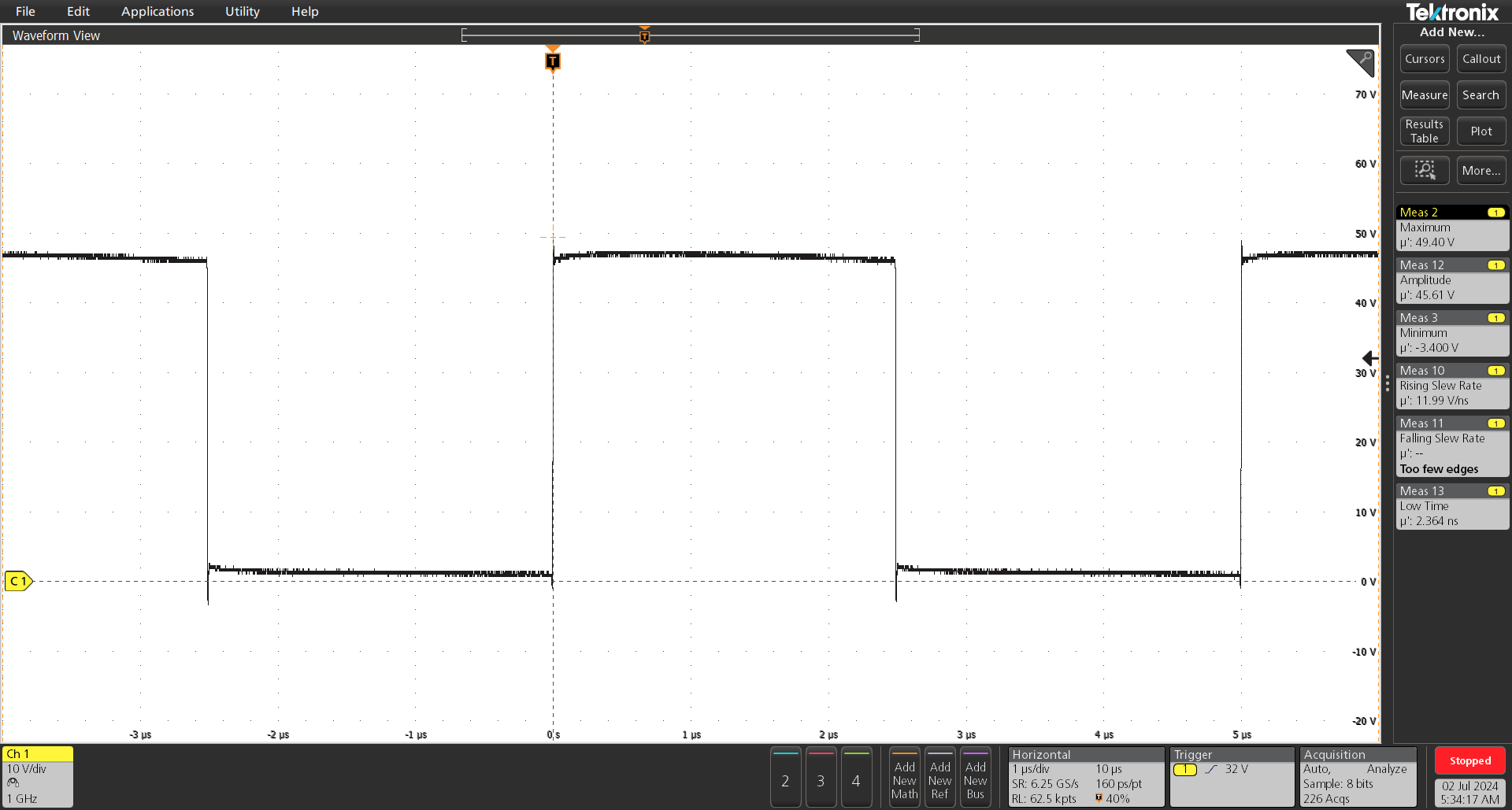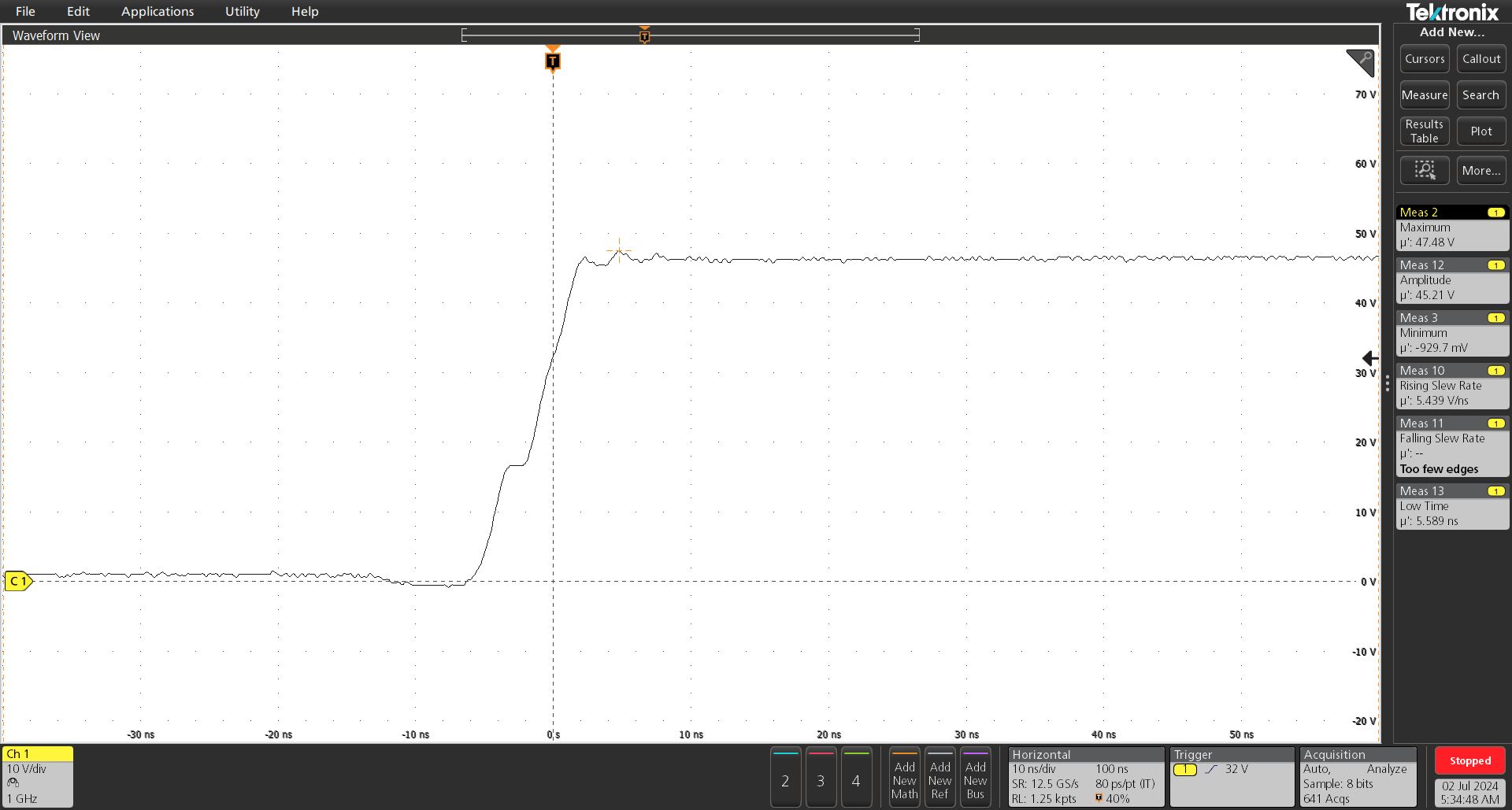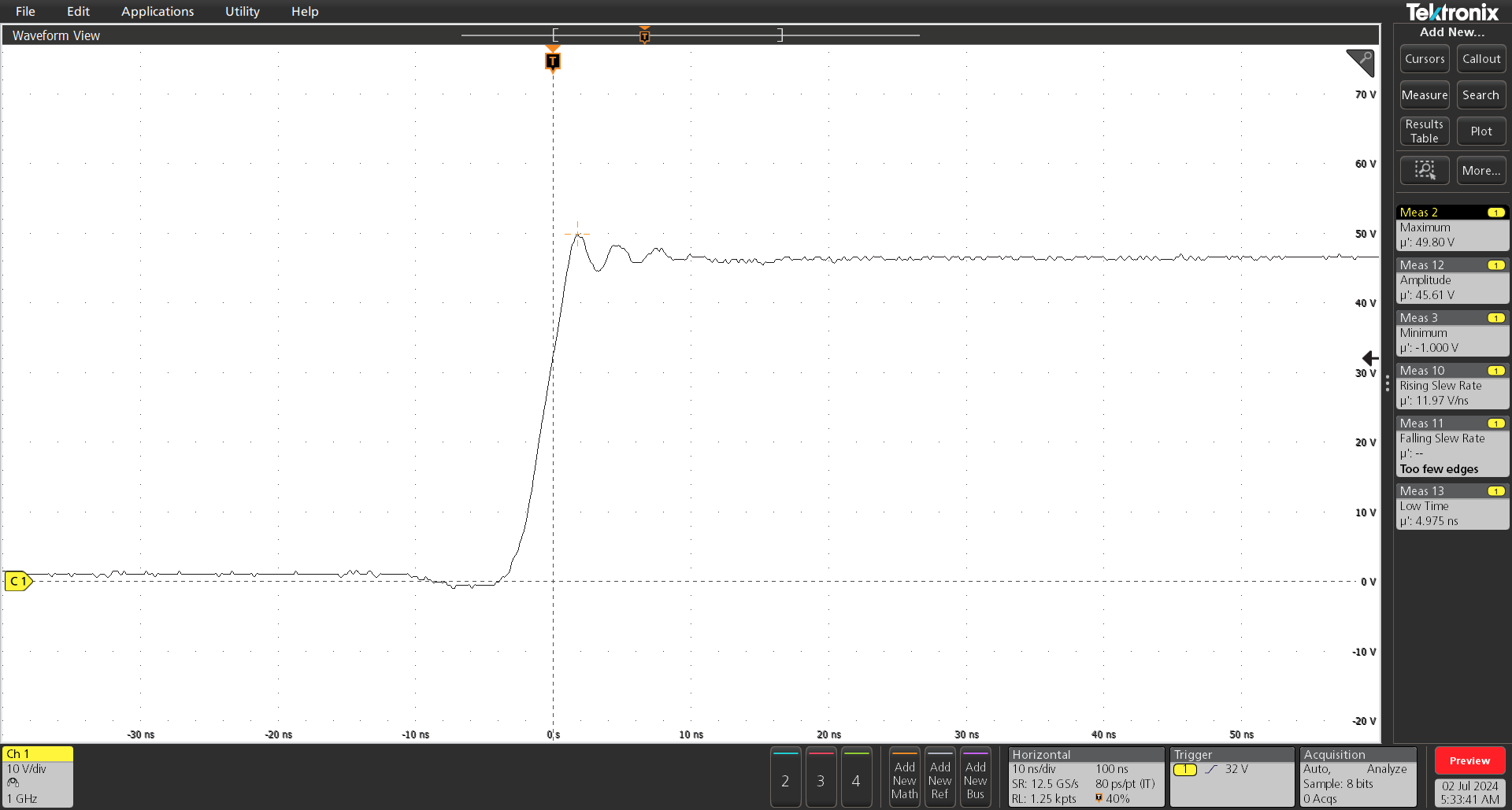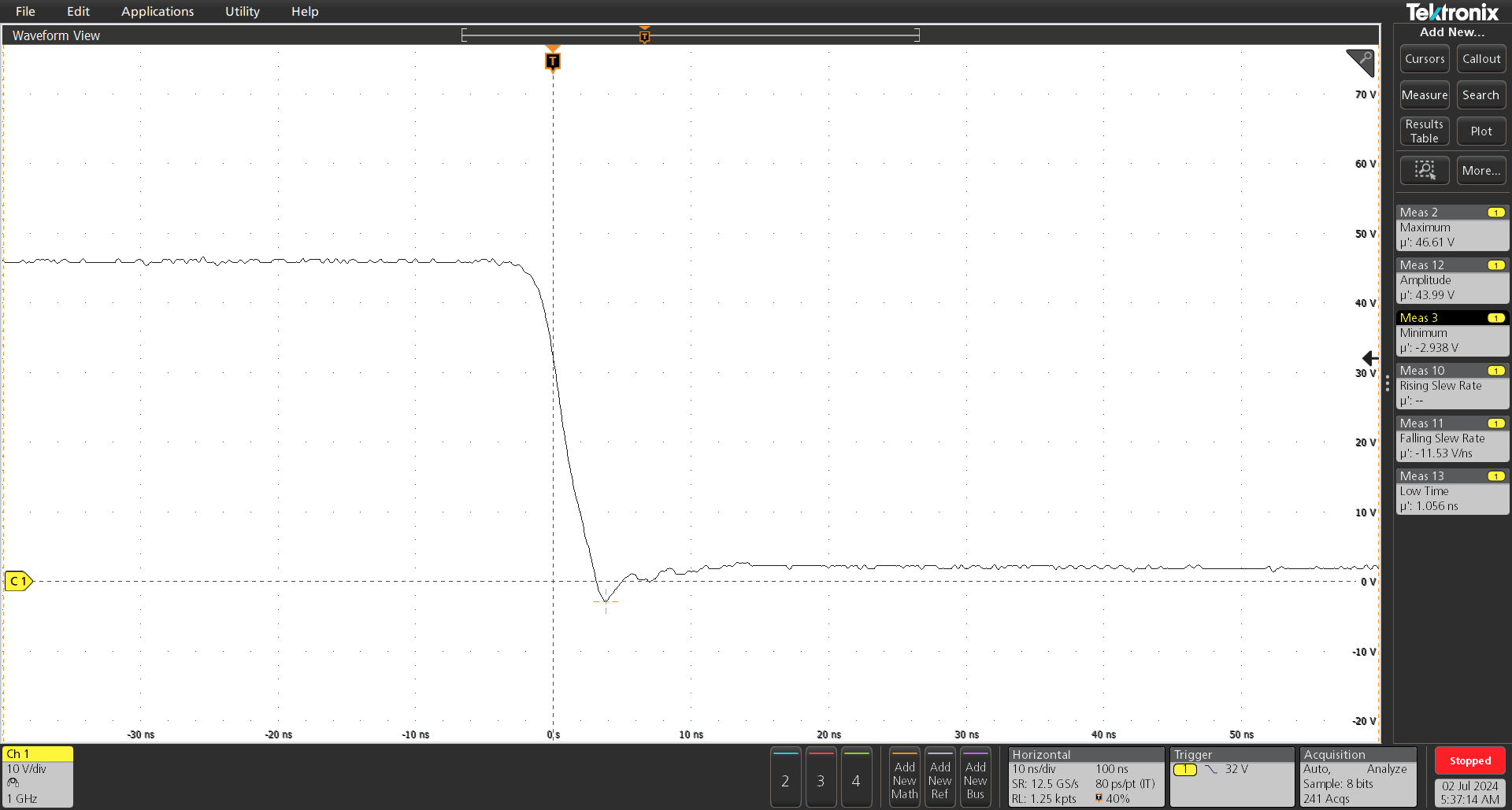SNVU915 August 2024 LMG2100R026
3.1.2 Performance Data and Results
Switching node behavior for 48V-24V 20A Buck at 200kHz and Rbst = 3ohm (between HB-HS)
 Figure 3-4 SW Node Behavior Showing the Dead Time and the Overshoot
Figure 3-4 SW Node Behavior Showing the Dead Time and the Overshoot Figure 3-5 SW Voltage Rise (Without External Isolated Supply on HB-HS)
Figure 3-5 SW Voltage Rise (Without External Isolated Supply on HB-HS) Figure 3-6 SW Voltage Rise (With External Isolated Supply on HB-HS)
Figure 3-6 SW Voltage Rise (With External Isolated Supply on HB-HS) Figure 3-7 SW Voltage Fall
Figure 3-7 SW Voltage FallNote: Visit the E2E forum Gallium Nitride Solutions for more information regarding LMG2100R026 or LMG2100 hard-switched EVM.